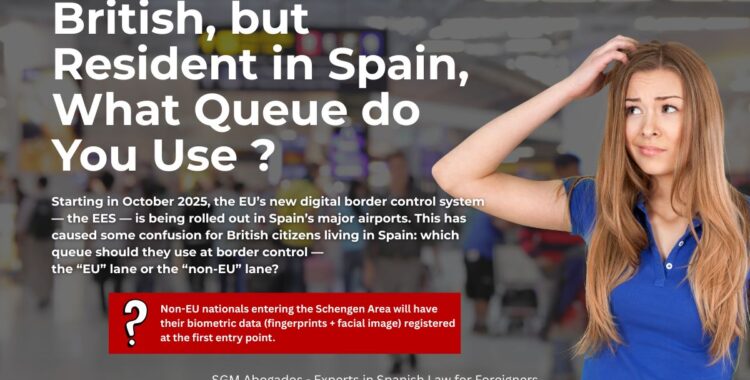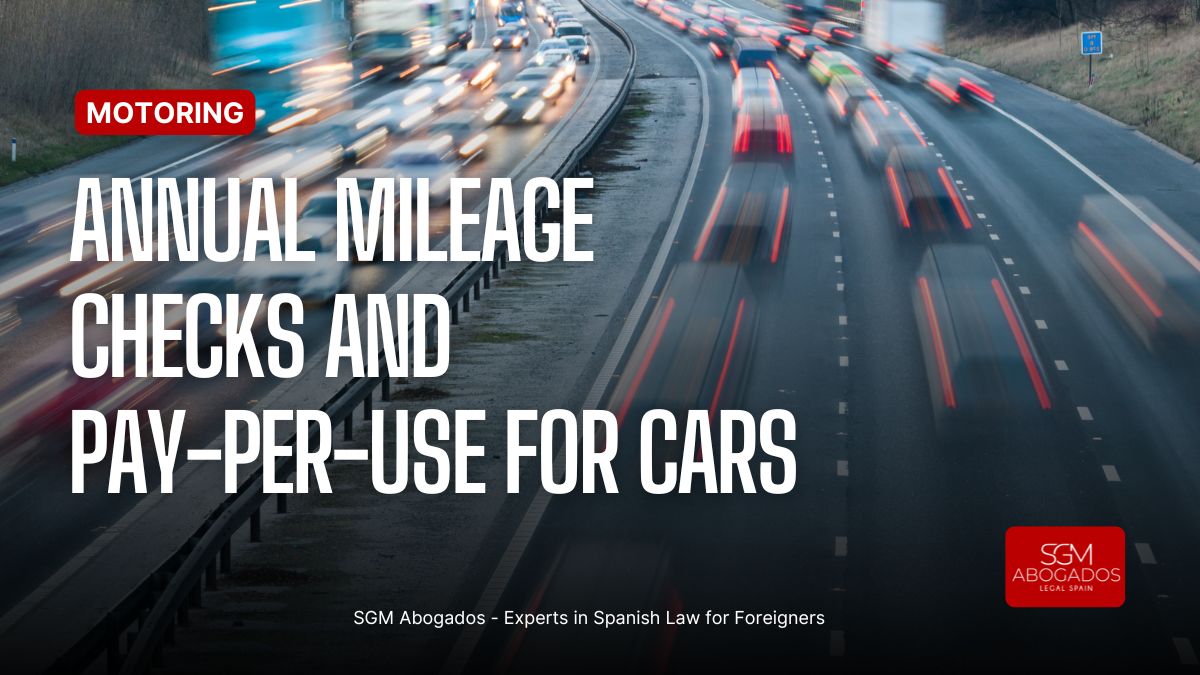“EU” Lane or the “non-EU” Lane?
What British residents in Spain need to know: EES border queues and how this affects you
Starting in October 2025, the EU’s new digital border control system — the EES — is being rolled out in Spain’s major airports. Understandably, this has caused some confusion for British citizens living in Spain: which queue should they use at border control — the “EU” lane or the “non-EU” lane? This blog will break down the key points for you, as a UK national holding Spanish residency, and indicate practical steps to take from our vantage point at SGM Abogados.
1. What is the EES and why does it matter?
The EES (Entry/Exit System) is a biometric-based system designed by the European Union to monitor entries and exits of non-EU nationals (so-called “third country nationals”) in the Schengen Area.
Under the EES:
Non-EU nationals entering the Schengen Area will have their biometric data (fingerprints + facial image) registered at the first entry point.
The processor tracks how long they stay, so it becomes easier to enforce the “90 days in any 180-day period” rule for visits.
Spain is implementing it in phases; full rollout across all border points is expected by April 10, 2026.
For UK nationals living in Spain, the introduction of the EES has a specific significance: although you live in Spain and hold residency, border officials need clarity on which lane you should use, and whether you are being processed as a resident (exempt from the 90-day limit) or as a visitor.
2. What has Spain’s Interior Ministry clarified for British residents?
According to a recent article by The Olive Press (28 October 2025):
British passport-holders with a valid Spanish residency card (TIE – Tarjeta de Identidad de Extranjero) should use the non-EU / “third-country nationals” queue at border control in Spain.
Despite using the non-EU queue, the TIE means you are not treated as a tourist, and you are not subject to the 90-day stay limit that normally applies to non-residents.
Practically this means: present both your UK passport and your TIE card when passing through border control. The officer or system should recognise your residency status and exempt you from visitor rules.
The rollout of EES in Spain is occurring by airport: for example, Madrid first, then Málaga (from 20 Oct), Alicante & Barcelona (from 27 Oct), and Palma de Mallorca (from 19 Nov).
3. Implications of that clarification – what to do (and what to watch out for)
Action points for British residents in Spain:
Ensure you always carry your valid TIE card together with your passport when travelling in/out of Spain. Without the TIE you might be treated as a visitor.
Be aware that although you may use the non-EU lane, your residency status protects you from the 90-day/180-day rule that applies to visitors.
At airports, allow a little extra time during this transitional period: some confusion and queues are expected as the system becomes fully operational.
If you only hold the old “green certificate” of registration (pre-TIE), you may be at risk of being treated as a visitor; it is advisable to obtain the biometric TIE as soon as practically possible.
Things to watch out for / possible issues:
Border officials at different airports may interpret queues/lane usage differently (especially during rollout). According to comments in the article, for example, some travellers reported that the airport did not recognise the “resident queue” option even though the official guidance says so.
Implementation is phased: not every airport or land/sea border will have full EES infrastructure from day one. So procedures may vary.
If your TIE card is expired, lost or invalid, your resident status may not be recognised at the border, which may result in being treated as a visitor and thus subject to the 90-day rule.
Always check local airport notices (especially at smaller airports or for sea ferry terminals) for the status of EES rollout.
4. Why this matters for property-buyers and residents in Spain
At SGM Abogados, our focus is advising non-Spanish nationals who establish residence in Spain — often through property acquisition, relocation or retirement. The new EES system intersects with residency status in important ways:
If you are resident in Spain and hold a TIE, your right to stay (and buy/sell property, maintain banking, tax domicile, etc.) remains fundamentally unchanged by EES. However, the practical airport/entry procedures now have a new layer of complexity.
For clients who travel frequently between Spain and the UK (or elsewhere) and especially those who may purchase holiday homes or investment properties, ensuring the correct queue usage and documentation is important for smooth inbound/outbound travel and avoiding unintended “tourist-status” treatment.
For estate planning, tax and residency planning: while EES is border-control focussed rather than taxation-focussed, the way residency is verified at travel points may influence how authorities view your overall resident/non-resident status. Having your paperwork in order (valid TIE, up-to-date registrations) mitigates ambiguity.
If a client still holds an older green certificate (rather than a TIE), we would recommend reviewing their status and, if necessary, assisting with TIE application as a sensible precaution in light of the new border regime.
5. Summary – key take-aways
The EES is now being rolled out in Spain for non-EU nationals (including British passport-holders).
British nationals living in Spain with a valid TIE residency card should join the non-EU queue at Spanish airport border controls, not the “EU/EEA citizens” queue.
Using the non-EU queue does not mean you lose your resident rights — the TIE ensures you are exempt from the 90-day stay limit applying to visitors.
Always carry your passport and TIE together at border-control. If you do not have the TIE (or it’s expired), you risk being treated as a visitor.
Because the rollout is phased, allow extra time when travelling, and be aware there may be local variation in procedure between airports and ports.
For non-Spanish residents engaging in property, relocation or investment: ensure your residency documentation is up-to-date and consistent, as border-control procedures now reflect technological/formal verification of status.
At SGM Abogados, we remain ready to assist clients with all aspects of residency, immigration, cross-border travel compliance, and property matters in Spain. If you are a British national resident in Spain (or planning to become one), and would like help ensuring your documentation is in order in light of the EES rollout, please feel free to contact us.











